There are thousands of insect pests of plants. These pests live on host plants and steal their nutrients. Among them are mealybugs. The mealybugs are a problem for garden plants, fruit trees and indoor succulents. Mealybugs are oval soft bodied insects that suck sap from their host plants for their growth and multiplication. In this article, let’s discuss how to kill mealybugs on succulents.
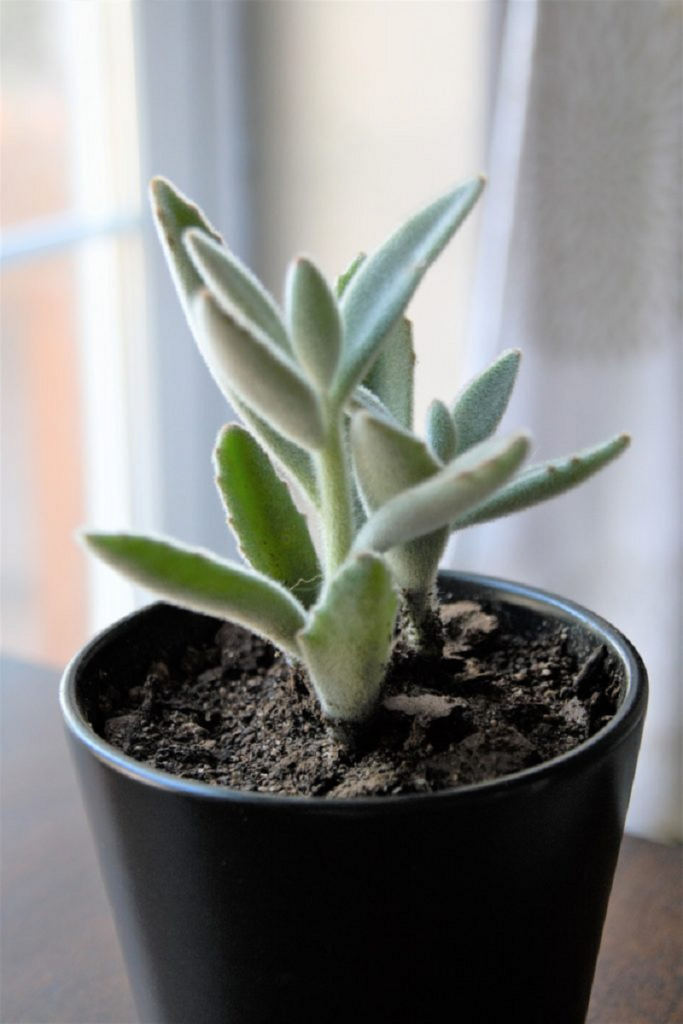
What Are Mealybugs?
Mealybugs are small oval-shaped insects that belong to the Pseudococcidae family. These unpleasant bugs eat new growths in succulents and are a problem for all gardens and houseplants. Mealybugs appear as white, soft, powdery cushions that suck sap from their host plants.
Like other scale insects, mealybugs have piercing-sucking mouthparts and produce honeydew associated with a black sooty mold on their host plants. These sugary secretions attract secondary pests and affect plant vigor and strength against enemies.
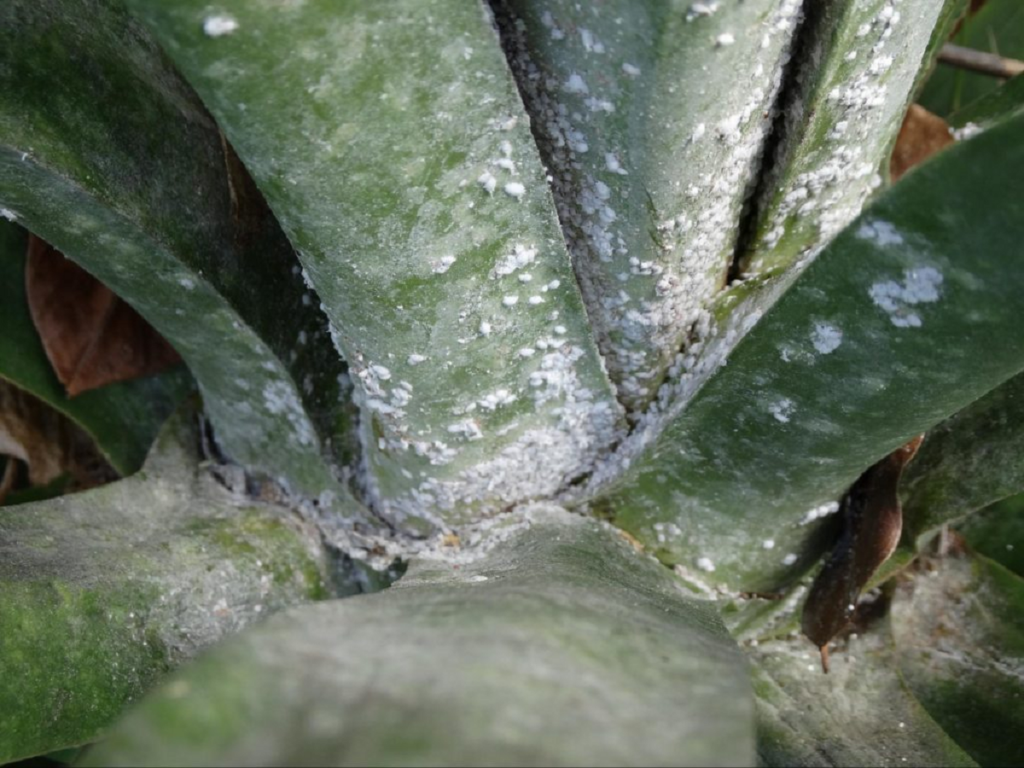
Mealybugs secrete a white powdery wax across their whole body for their protection. At the same time, the other mealybug species are white, off-white, yellow, pink, and orange. Mealybugs feed on the whole plant, including stems, leaves, flowers, and new growths. In the case of succulents, these scaly bugs suck their sap or nutrients, making them weak, and influencing their aesthetics.
How to Identify Mealybug Infestations?
Upon host plant species, mealybugs appear as cottony cushion scale. And they can easily be found on the stem and at their junctions.
Mealybugs produce white cottony wax across their whole body, while in the older mealybugs, it turns into larger filaments. And these white cottony filaments are more abundant in the rear and play a vital role in their identification.
Another easiest way the identify mealybugs is their eating behavior. They eat in the form of colonies or clusters to protect themselves. And they are always present in particularly protected areas of plants such as between the stems, between two touching leaves, and on a branch simultaneously, near soil or roots. The older mealybugs have segmented bodies covered with white cotton-like wax.
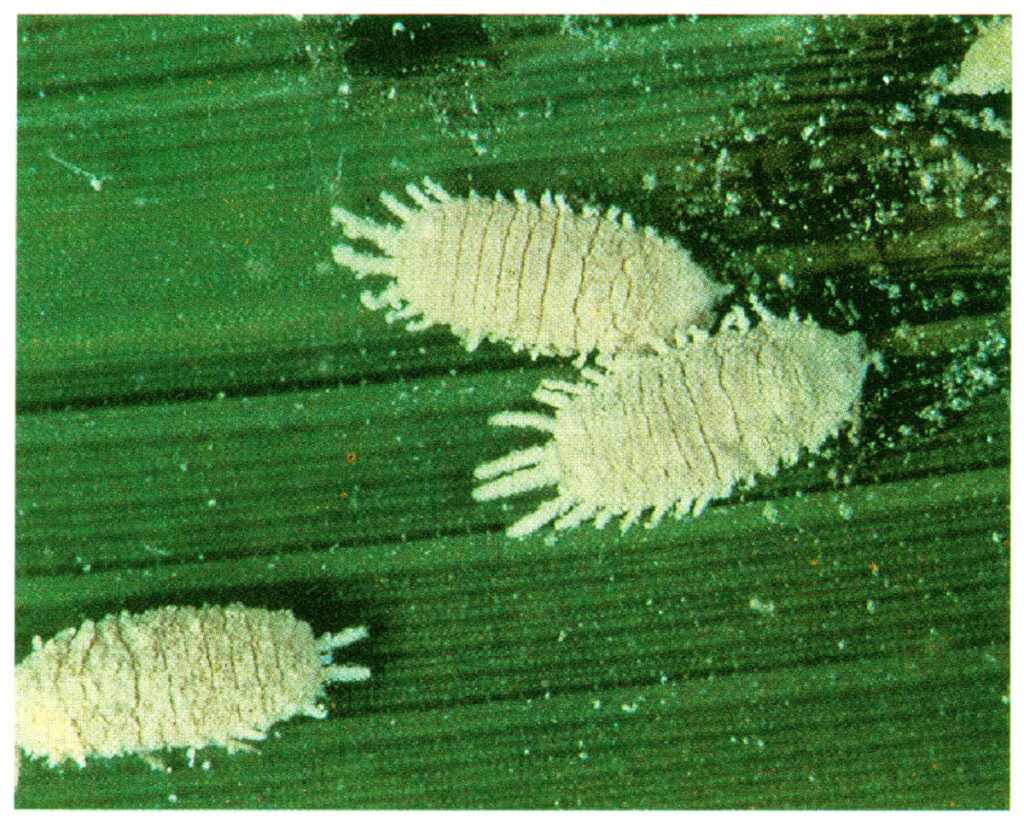
The female mealybugs are similar to nymphs (immature insects) and wingless. While the male mealybugs are small, two-winged insects with two long filaments in the rear. The male mealybugs are rare to be seen. Many mealybug species reproduce asexually without mating.
The adult mealybugs are ( 1/10—1/4 inch long) with distinct segmented bodies. The white cottony and segmented body are the unique features of their identification.
In addition, mealybug infestations cause yellowing of leaves and stunted growth & reproduction. They turn healthy plants into diseased ones.
What are the Host Plants of Mealybugs?
Mealybugs are a problem for both indoor and outdoor plants. They impact all plants such as garden flowers (pink hibiscus mealybug), greenhouse plants, and indoors. The hosts of mealybugs are citrus, cotton, dracaena (canes), and hibiscus plants.
Among these hosts, dracaena is more susceptible to mealybugs. And the infested plants show stunted growth, wilting, yellowing of leaves, and dieback. The dieback symptom is more evident in highly infested plants.
Dieback is the progressive death of branches, leaves, twigs, stems, and roots starting at the tips.
What is the Life Cycle of a Mealybug?
The life cycle of mealybugs comprises three stages—an egg, a nymph, and an adult. Mealybugs complete their life cycle in 1–3 months relying on their host plants and environment. The female mealybugs lay eggs (100-200) in white cottony sacs within a period of 10 to 20 days.
These egg sacs appear as dust that attaches to leaves, barks, twigs, and stems through their filaments.
The nymphs emerge from eggs and have functional legs. Unlike other scale insects, the nymphal stages of mealybugs are mobile and can crawl short distances. These stages are similar to adult females but are smaller in size. After three to four molts, these nymphal instars turn into adult females.
The male nymphs are slightly different than female instars in size. They are longer and molt four to five-time until they change into adult male mealybugs. The male also has a pupal stage before emerging into an adult.
The mealybugs can have five to six generations in a year, depending on environmental conditions. The optimum temperature condition for them is 25℃ with high relative humidity. Therefore, these scale insects are more active in the warm season and less in the excellent season.
Mealybugs are also confused with other insect pests of house plants due to their waxy secretions. Or with other insects that produce honeydew and black sooty mold. These insects are whiteflies, woolly aphids, and even some soft scales.
Therefore, it is wiser to carefully examine the insect under waxy coatings to explore the insect under waxy coatings for proper management carefully proper management.
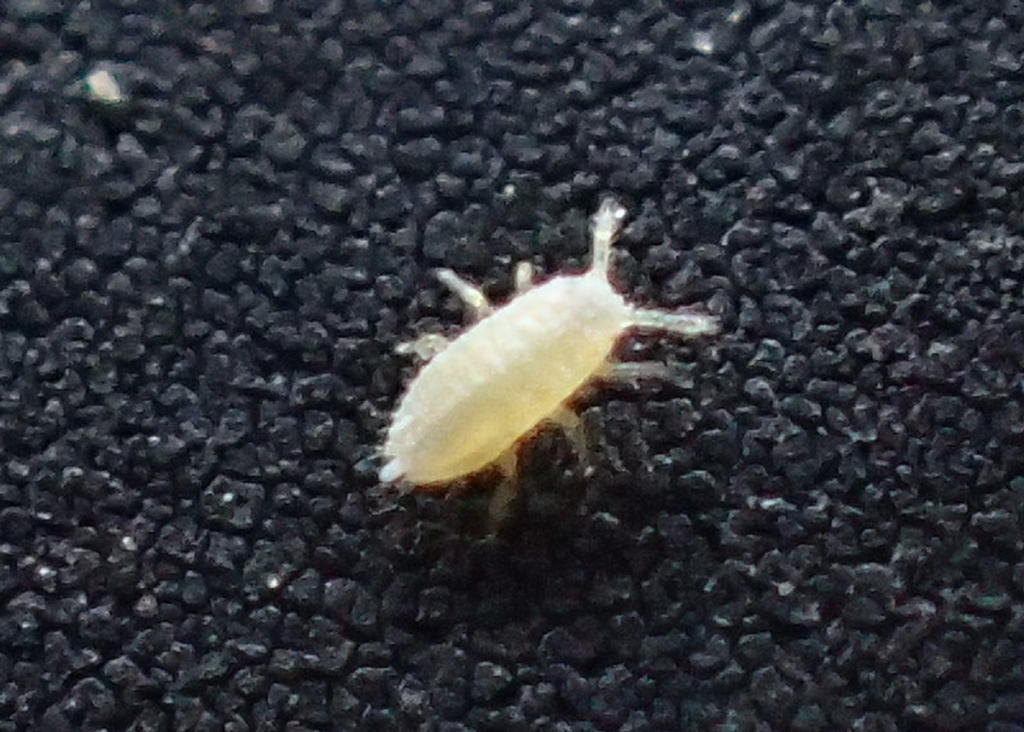
How to Manage or Kill Mealybugs on Succulents?
The management of mealybugs in both houseplants and outdoor plants is complex. Because there, all three stages are present on their hosts. Mealybugs are also difficult to control through insecticides (chemical control). However, they can be managed through biological control, horticultural oils (neem oil), and predatory insects.
Following are the best approaches to control mealybugs
Monitoring
As the mealybugs always hide in protected plants, regular monitoring for their management is essential. Because sometimes they go unnoticed. The careful monitoring of plant crevices, leaves, and flowers for mealybugs and crawlers prevents their spread from plant to plant.
It also adds information to management decisions. Regular monitoring also helps in the determination of numbers of mealybugs. Such as either their numbers per plant is increasing or decreasing.
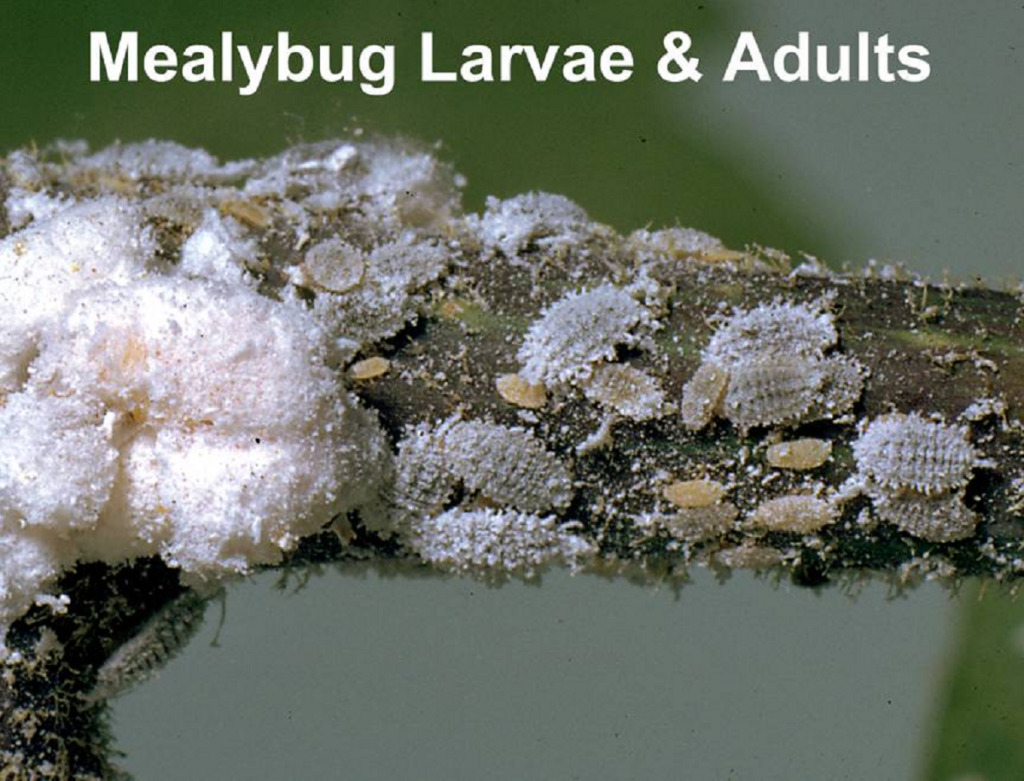
Monitoring for mealybugs also includes the turning or constant shaking of leaves or plants to look for sooty mold and other pests such as ants and beetles. In addition, using a hand lens (10X to 20X) for egg masses and nymphal stages prevents the damage of mealybugs and improves plant health.
The monitoring for egg masses and crawlers is the best approach to diminish the populations of mealybugs at the initial stages. Because at nymphal stages, chemical control is more effective while the adults are more tolerant to chemicals.
Pruning
For light infestations of mealybugs, either indoor or outdoor, pruning is the best management approach for controlling mealybugs. For indoor, lens removing overgrown leaves or affected plants with scissors prevents the advancement of these scale insects.
Pruning—is the cutting of overgrown or dead plant leaves, branches, twigs to prevent diseases and enhance plant growth and development.
Cultural Practices for the Management of Mealybugs on Succulent plants
Cultural management practices minimize the infestations of mealybugs:
- Always inspect succulents before transporting them from outside place to inside. And remove any white powdery masses from infested plants. The timely removal of eggs will help in mealybug population reductions.
- The timely removal of infested dead plants will save the life of the rest of the plants. It will .save the plant life and inhibit the further dispersal of mealybugs. If the infestations of mealybugs or scale insects are limited to particular plant parts, then cutting that part will save from further spread and population growth. This management practice is also effective for other plants.
- Do not overwater the succulents because overwatering attracts the nymphs and damage plants.
- Do not move from mealybug-infested plants to healthy ones because it will also cause their infestations in healthy plants.
- In the case of small numbers of mealybugs in houseplants, squash them by hands to avoid their further growth.
- Avoid applications of fertilizers, especially nitrogen fertilizer. The nitrogen fertilizer and irrigation promote new plant growth and mealybug egg production.
- The control of ants also prevents the infestations of crawlers because they prevent them from their natural enemies.
- The places near succulents should be kept clean and disinfected to control mealybugs.
- A thorough disinfestation of pots will help in the removal of cottony egg sacs and nymphs.
- Provide succulents with the proper nutrition and temperatures for their health because susceptible plants are more prone to infections.
- Maintain adequate spacing between plants. It will ensure proper air movement and remove the favorite places for the hide of mealybugs.
Biological Control
Biological control helps in the management of mealybugs and also saves the environment from chemicals. Several beneficial insects are commercially available for the control of mealybugs. Such as lacewing and ladybugs. These beneficial insects naturally prey on scale insects and destroy them.
Cryptolaemus montrouzieri
This beneficial insect is known as a mealybug destroyer and feeds on many other scale insects.

Both larvae and adults of Cryptolaemus montrouzieri feed on mealybugs and control their infestations on plants. Both adults and tiny larvae feed on the first stage instar, while the larger larvae feed on larger mealybugs and adults.
Related: How To Get Rid Of Root Mealybugs For Good? A Comprehensive Guide
Chemical Control
The mealybugs are challenging to control with pesticides because the adults are more tolerant to pesticides. The only contact pesticides can control mealybugs because they slow down the secretions of waxy layers and expose their bodies to natural predators.
Botanical Oils
Neem Oil
The neem oil sprays manage the high mealybug populations and do not cause any harm to natural predators. Instead, it slows down the feeding activity of mealybugs and retard their growth and development. For best results, add 1 oz/ gallon of water and spray every 7-14 days or as needed.
Safer Insecticidal Soap
Frequently Asked Questions
What Plants Do Mealybugs Like?
Mealybugs (scale insects) are more attracted to plants with a higher sap or sugary carbohydrates content. Because this sap is the food of these soft-bodied insects, they suck it through their piercing mouthparts.
To confuse their presence on plants, they produce a white cottony wax around their whole body and live in protected plants.
Do Mealybugs Live in Soil?
These soft-bodied insects are more fond of warmer climates and are present everywhere. The root mealybugs live in root balls or along with the roots. These lay eggs in the soil. And for their treatment, dish wash soap and rubbing alcohol are the best options.
Spray of this mixture until all the mealybugs are dead. Also, spraying the whole plant with rubbing alcohol and dish soap will kill the mealybugs and their instars.
How Do I Save Moldy Succulents?
The mold on succulents is because of mealybug infestations. And it can be treated through various approaches, such as through pesticides, botanical oils, insect growth regulators, and predatory insects. However, the more handy and rapid method is regular dish soap dilution with water.
It will instantly kill or dust off the scaly insects.
Why is My Succulent Growing White Fuzz?
The white fuzz is an indication of mealybug infestation. And its constant growth on succulents will cause stunted growth and wilting. These scale insects suck sap from succulents and produce white fuzz on plants to protect predators.
In addition, their constant feeding will enable them to grow and multiply rapidly and secrete a sticky material that will attract sooty mold fungi.
How Do You Stop Mealybugs?
One of the best ways to stop their infestations is the introduction of predatory insects such as green lacewing, lady beetle, and wasps.
The wasps lay their eggs on developing mealybugs. At the same time, the lady beetles are referred to as the natural destroyer of mealybugs—all stages of lady beetle feed on all stages of mealybug. The adult and larvae feed on the adult of scale insects and their developing instars. Commercially available predatory insects are the best practice in managing the mealybugs.
Sources for Further Reading
- “How to Manage Pests.” UC IPM Online, University of California Agriculture & Natural Resources, http://ipm.ucanr.edu/PMG/PESTNOTES/pn74174.html.
- Mealybugs – a pest of a different scale. Hort Innovation. (1AD, January 1). Retrieved January 4, 2022, from https://www.horticulture.com.au/growers/help-your-business-grow/research-reports-publications-fact-sheets-and-more/mealy-bugs—a-pest-of-a-different-scale/
- Dekker, S. (2021, August 18). How to identify and control mealybugs. Gardener’s Path. Retrieved January 4, 2022, from https://gardenerspath.com/how-to/disease-and-pests/control-mealybugs/
Grow healthy succulents, check out and Learn Easy Ways on How to Take Care of Succulents and Step by Step Guide to Preparing a Perfect Potting Mix for Your Succulents
Make sure to read Are Succulents Really Toxic and May Hurt Your Innocent Cat or Dog?







